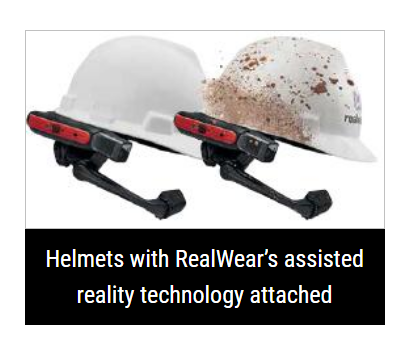Welcome to Sino Bearings web
24x7 HOTLINE:+86-28-81454188

 NEWS
NEWS
A connected workforce is a safer and better workforce, says Mark Thurgood. How can assisted reality wearables enhance safety for the oil and gas industry?
Despite the on-going efforts to make it safer, the oil & gas industry is a notoriously hazardous sector to work in. According to the Occupational Safety and Health Administration from 2013 to 2017, 489 oil & gas extraction workers lost their lives on the job (Census of Fatal Occupational Injuries). With statistics such as these, ensuring that the best possible health and safety measures are in place is a significant consideration for companies operating in this space, and it’s imperative that these companies continue to bolster safety measures wherever possible.
As we have seen in many other industries, technology and digitalisation are key drivers in making workplaces safer, and as a result many oil & gas companies are now adopting technologies that empower their employees and increase productivity while enhancing worker safety. This shift to a safer working environment is fuelling innovation, and we’re now starting to see a rise in ‘digital oil & gas companies’ – those that embrace digital transformation taking place across the industry and understand the importance of providing their employees with cutting edge technology to improve safety while remaining agile and competitive.
It can be challenging for oil & gas operators looking to further reduce risk in the workplace to ensure that their employees are as safe as possible. How can they provide their workers with access to information when they need it and how can they communicate easily with colleagues on the front line, whilst keeping their eyes and their hands on the job? This is where assisted reality is changing the risk landscape.
What is Assisted Reality?
In short, assisted reality refers to technology that displays a non-immersive visualisation of content, hands-free. Assisted reality wearables enable workers to access the right information when they need it whilst providing them with full situational awareness, so that they’re not distracted from the job at hand. In essence, you wouldn’t want a worker accessing information through a tablet or phone, where not only would their hands be occupied - possibly requiring them to remove their gloves, too - but also their field of vision would be obscured, increasing the risk they’re exposed to. Wearable assisted reality devices provide the user with that same computing power they would get from a tablet, with the ability for this technology to be clipped directly onto a hard hat. This enables a worker to quickly glance at the screen without taking their attention away from dangerous equipment or scenarios.
From a safety perspective, the technology enables workers to stay connected at all times, with the ability to communicate with colleagues around the world via video conferencing software, without using their hands. Assisted reality devices also provide the ability to investigate and learn from incidents, in real-time, as well as the ability to conduct health, safety and environmental field audits and assurance activities hands-free. All of this is achieved through the use of audio and visual technology.
One such feature that is particularly key in ensuring that the technology can meet the needs of the oil and gas industry is the advancements that have been made in speech and voice recognition software. This has resulted in assisted reality wearables being able to be operated safely in extremely noisy industrial settings, marking a turning point in the wider adoption of the technology across the oil & gas industry.
Pandemic Case Study
Assisted reality has also been a vital technology for oil & gas companies in continuing to operate safely through the pandemic. French Multinational Total used the technology at its La Porte polypropylene plant during the pandemic. The plant is the largest single-site polypropylene plant in North America and produces 2.7 billion pounds of polypropylene per year. It produces materials used in the making of masks and gowns, so it was particularly important that it remained operational during the pandemic.
Following its deployment of the technology, the plant was able to continue mass producing the raw materials used in the making of those essential medical supplies. Field operators using assisted reality devices were able to communicate instantly across the globe with remote experts during times of travel restrictions and social distancing where it was essential that in-person travel was limited wherever possible.
Maintaining and enhancing safety within the oil & gas industry is an ongoing conversation, especially as digital transformation has accelerated due to the pandemic. The traditionally low-tech industry is seeing better tools to help improve worker productivity and efficiency. However, these additions must be designed to complement and support workers in hazardous environments who require the use of both hands for their tasks.